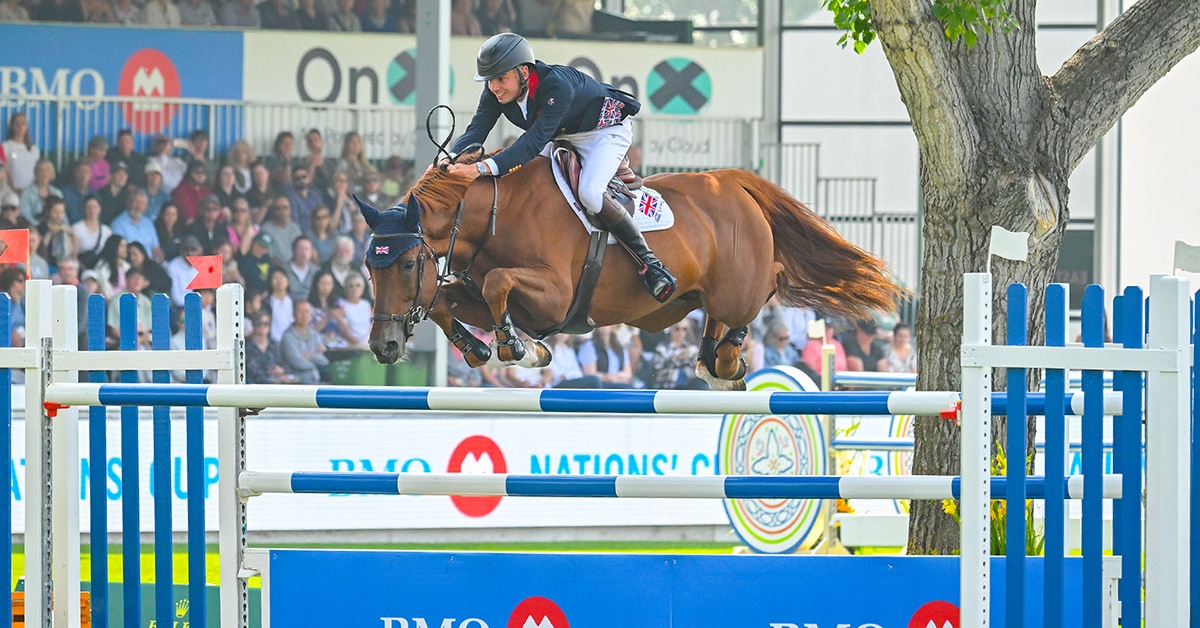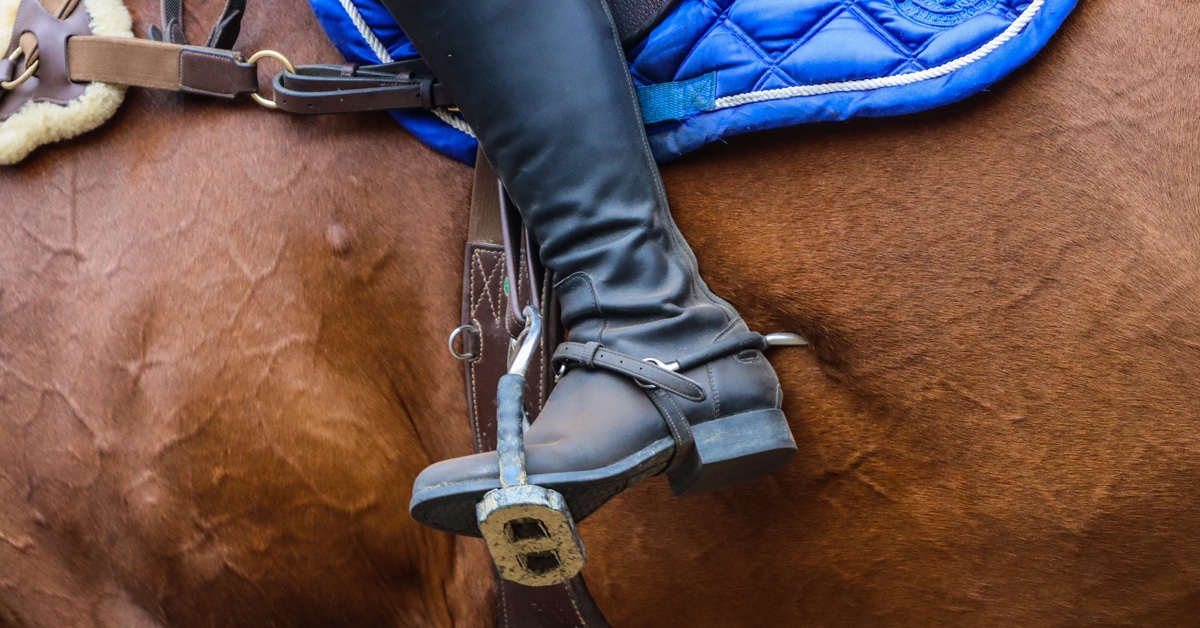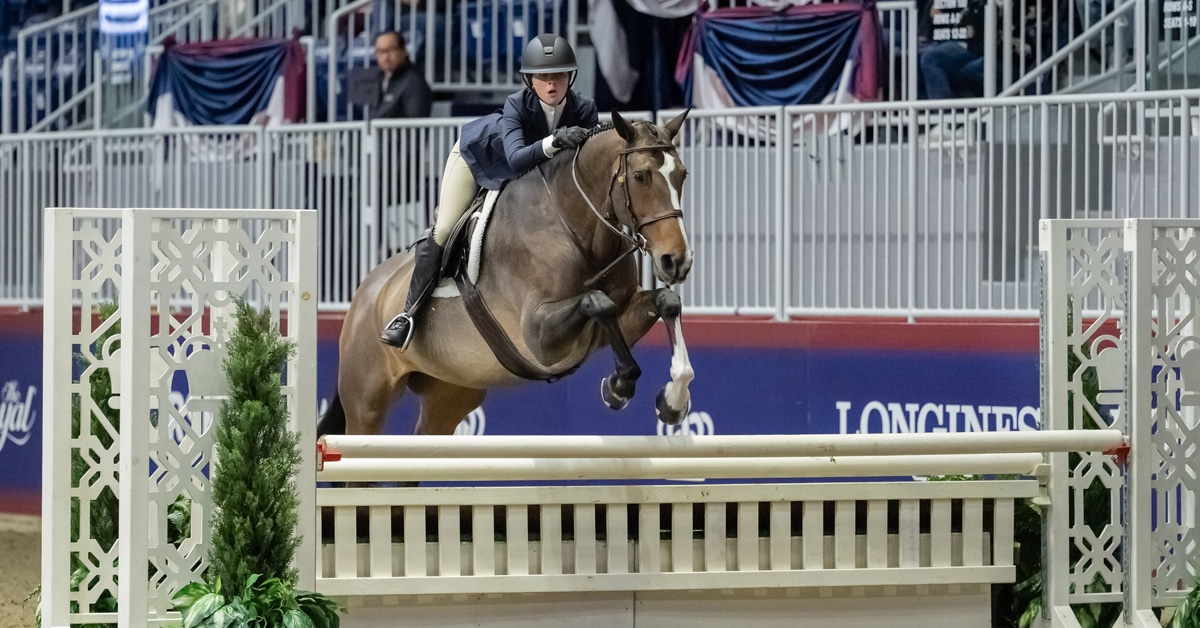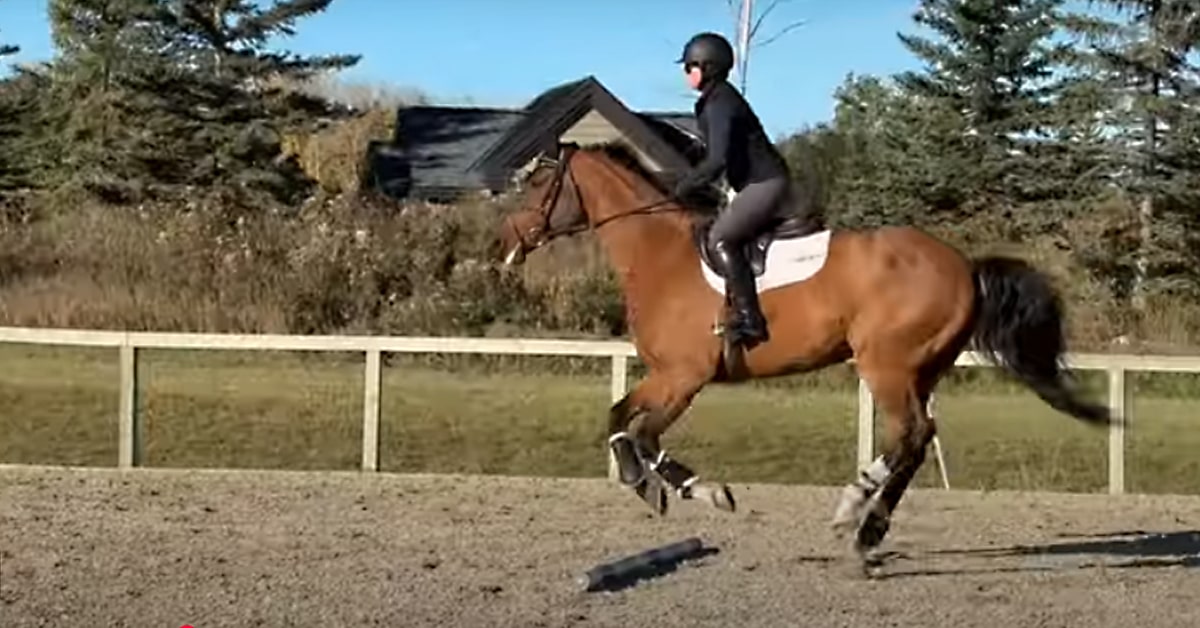In the spring of 2024, 22 Thoroughbreds were seized from a rented property in Campbellville after three escaped through broken fencing and began wandering the highway.
Months later, the owner was ordered to pay almost $70,000 in fees covering transportation, farrier work, veterinary treatment (including costs to euthanize one horse injured in the escape), and several weeks of stall boarding.
The owner disputed the charges, arguing that full stall board was unnecessary for the horses, who were kept at grass, and the $40-$50/ day board fee was too high. He also argued that the transportation fees to trailer over 20 horses to a facility over 100 km away were similarly exorbitant and that they could have easily been pasture boarded nearby. (Khan v. Chief Animal Welfare Inspector, File 15992/ACRB)
Cases like this highlight one of the most controversial — and least understood — aspects of equine welfare enforcement in Ontario: the cost of rescue, and who is responsible for it.
The Cost of Rescue
Behind every seized horse is a trail of invoices.
When animals are removed under the Provincial Animal Welfare Services Act (PAWS), owners are often billed thousands of dollars in post-seizure care. These Statements of Account include charges for transport, emergency boarding, veterinary diagnostics, and treatment. Sometimes, the Statement of Account includes hotel costs for rescuers, as well as specialist services such as foaling or dentistry.
When owners can’t or won’t pay, those animals are automatically forfeited to the Crown. So how are these bills calculated? Why do they climb so high — and who decides what’s “reasonable” when the clock is ticking on a horse’s survival?
Horse Sport unpacks the financial machinery behind Ontario’s equine seizures: how costs are calculated, why owners fight them, and what happens when owners can’t pay.
What is a Statement of Account?
When horses are seized under the PAWS Act, they don’t just “vanish into the system” — they enter temporary care. Like most things involving horses, that comes at a (usually significant) cost.
To recover these expenses, the Ministry of the Solicitor General issues a Statement of Account (SOA) to the owner. These legally binding invoices cover the costs incurred while the animals are in the province’s custody. A typical SOA varies on a case-by-case basis, but typically includes:
- Transportation, to remove the horses and relocate them to emergency facilities.
- Emergency boarding fees, often for indoor stall board if outdoor facilities are unavailable or unsuitable, or if the horse requires medical treatment or observation.
- Veterinary care, including physical exams, medications, pregnancy checks, or treatment for chronic conditions.
- Farrier services, especially in cases of neglect where hooves are badly overgrown or the horse is suffering from chronic lameness.
Some SOAs have also included more unusual items — hotel costs for staff overseeing remote seizures, or specialized care for foaling mares and colicking seniors.
While owners have the right to challenge individual line items, the impact of unpaid SOAs is straightforward: if the bill isn’t paid by the due date, typically within 30 days, the animals are legally forfeited to the Crown.
The PAWS Act treats non-payment as equivalent to relinquishment. Once that happens, the Animal Care Review Board (ACRB) no longer has the authority to return the animals, even if the owner wins an appeal on other grounds.
For example, in a case involving a private zoo that was shut down and 74 animals were removed, the owner appealed for return of her animals, but the motion was dismissed citing “Non-payment of an SOA activated forfeiture as outlined in section 35(4)(a) of the PAWS Act. Accordingly, on November 28, 2023, the Appellant forfeited the 74 animals to the Crown, because the SOA had not been paid. Forfeiture is a statutory mechanism that automatically occurs when an owner has failed to pay an SOA. It is not triggered or stayed by actions of the Crown, the Chief Animal Welfare Inspector, or the Board.” (Rock vs. Chief Animal Welfare Inspector; File 15399; 15412/ACRB).
In short, SOAs aren’t just paperwork — they’re the financial linchpin of the rescue process, and often the final wedge between an owner and their horse.
Why Are These Bills So High?
For many owners, the shock doesn’t come with the seizure — it comes with the bill.
Statements of Account routinely total thousands, sometimes tens of thousands, of dollars. While owners can (and do) dispute the costs, they have varying degrees of success.
For example, in one Northern Ontario case, a farm owner was ordered to pay $45,063.32 for the removal and care of 193 animals, including three horses. After contesting the order to remove the animals and the final bill, the Animal Care Review Board removed $1,378.88 in excess transportation costs, finding that a mileage discount applied was not passed along to the owner, and that some invoices included meal and hotel allowances for truck drivers, while others did not, and that it was unfair to issue inconsistent invoices. However, it was a small concession for the owner, and the final total still exceeded $43,000. [Peredery vs. Chief Animal Welfare Inspector; Files 15402; 15403; 15456)
Accounting mistakes aside, why does the cost of rescue seem so high? There are three main reasons: emergency logistics, complex veterinary needs, and the age-old question, “what’s a reasonable cost?”
Emergency Logistics Drive Prices Up
When Animal Welfare Service (AWS) removes a large group of animals at once, they can’t shop around for deals.
In a 2023 case that involved 14 horses with rain rot and overgrown hooves removed from a pasture without shelter, the owner argued the province should have used a closer facility with cheaper boarding rates. But AWS couldn’t find one able to take 14 horses on short notice. The emergency boarder they used was deemed to be the only viable option that could take in over a dozen equines at a moment’s notice. (Nicholls v. Chief Animal Welfare Inspector, File 14456)
The urgency of rescue means premium prices, especially when a large number of horses require stall board rather than turnout due to health, quarantine, or weather.
Veterinary Needs Are Often Complex
Many seized horses arrive in poor condition. They may be injured, underweight, untreated for parasites, or in need of diagnostics like bloodwork, dental exams, or pregnancy checks. These issues are standard in rescue triage, but the costs can add up quickly, especially when multiple horses are seized at the same time.
In the case of four geriatric equines seized from a property in New Lowell, a veterinarian found the horses underweight, with overgrown teeth and difficulty chewing. One mare suffered from an ossified knee injury that caused visible lameness.
The veterinarian recommended a full dental assessment for all four horses and short-term pain medication for the mare to improve her comfort and mobility. The owner refused, citing a preference for naturopathic care and arguing that painkillers wouldn’t reverse the knee injury and might do more harm than good.
Weeks later, while in foster care, the mare was euthanized due to her declining health. Another horse was euthanized after she continued to lose weight in foster care, and a third horse had colicked from parasite-related complications (thankfully, she survived). (Somers vs. Animal Care Review Board 15525/ACRB)
Cases like this highlight why veterinary costs can escalate quickly. Horses seized under PAWS aren’t just thin or untrimmed — they may require diagnostics, dentistry, pain management, or end-of-life care. When multiple animals are involved, particularly seniors, those expenses multiply fast.
What Counts as ‘Reasonable’?
Owners often dispute what a “reasonable” rate is. Some argue the animals could have been housed for less, or that certain treatments weren’t necessary.
In the earlier case of 14 horses rescued from a farm in Burks Falls, the owner contested everything from $20/hour farrier standby fees while the farrier waited for the stressed equines to relax enough to be safely handled, to $15/day for treating rain rot. The adjudicator reviewed invoices and upheld the costs, noting that the vet’s treatment plans were appropriate (Nicholls v. Chief Animal Welfare Inspector, File 14456/ACRB).
Still, not all appeals fail. In the case of one horse, 13 pigs, and 17 poultry seized from a property in Iroquois Falls, the owner argued the board fees charged for her pigs were excessive ($30/day per pig and $15/day per piglet). The Adjudicator agreed, and in their decision stated “I find the boarding rate for the adult pigs, at $30 per day ($900 per month) to be significantly higher than the $150 per month the appellant was quoted […] I find that the rate charged for boarding the adult pigs is not reasonable, and vary it to $150 per month or $5 per day. (Bradley v. Chief Animal Welfare Inspector, Files 15534; 15540; 15532)
But no adjudicator to date has ruled that the care itself was unnecessary. So far, disputes over price have succeeded only when a clear billing error or overcharge has been proven.
Why Do Owners Dispute the Charges?
When faced with a five-figure invoice and losing their horses, many owners push back. Some challenge the decision to remove the animals; others appeal the Statement of Account. But the road to a successful dispute is steep, and rarely leads to significant relief.
Common Arguments
Owners who appeal SOAs often cite:
- Procedural unfairness, like late evidence disclosure or lack of legal representation.
- Financial hardship, especially for rural or low-income individuals.
- Alleged overbilling, particularly for transportation and stall board.
- Disagreements with veterinary recommendations, especially when owners prefer alternative treatments.
In a 2022 case, an owner of three Appaloosas (and assorted rabbits, turkeys, and chickens) kept in a rented paddock was given one week to provide his horses with food and water, and have their feet trimmed. Two days later, the investigator returned with a veterinarian who ordered the removal and humane euthanasia of three rabbits who were critically ill. The veterinarian also ordered the removal of the horses.
The following month, the owner was served with a $4,676.17 SOA, which he appealed, claiming ‒ among other issues ‒ that the animals were removed before the deadline to comply. He argued he had agreed to surrender his horses via text message and should not be financially responsible for their care.
He also alleged perjury and a conflict of interest involving the attending veterinarian, against whom he had filed a complaint with the Ontario Veterinary College.
The Board dismissed the appeal, reiterating that a “Keep in Care” order does not absolve the owner of financial responsibility unless the animals are formally forfeited to the Crown.” They also found no evidence that the veterinarian acted inappropriately. (Romkes v. Chief Animal Welfare Inspector, File 14406/ACRB)
What the Board Actually Considers
When reviewing SOAs, the Animal Care Review Board looks for:
- Invoices and documentation from veterinarians, farriers, and boarding facilities.
- Proof of the necessity of services rendered (usually based on the opinion of a veterinary witness for AWS).
- Any calculation errors or unsupported costs.
For example, in the Burks Falls case of the 14 rescued equines, the owner objected to pregnancy checks, $15-per-day skin treatments, and farriers charging $65 for a trim and $20/hr standby time while the horses settled down. She argued the costs were excessive, the mares (who had been kept with a stallion) didn’t need pregnancy checks, only an inexperienced farrier would need standby time, and that her farrier charged $20 less for a trim (although she had no receipts to prove this).
The adjudicator reviewed the veterinary reports and upheld the charges, noting that the treatments were reasonable and necessary under the circumstances, and the farrier costs were in line with the National Farm Animal Care Council Code of Practice for the Care and Handling of Equines (published in 2013, it listed a trim at $25-$50 every six to eight weeks). Adjusted for inflation and owing to the complex nature of the trims required for many of the neglected hooves, the adjudicator determined $65 was fair and supported the need for standby time (Nicholls v. Chief Animal Welfare Inspector, 14456/ACRB).
Rare Reductions, Few Reversals
While reductions are occasionally granted — for example, where a day of care for three Appaloosas was mistakenly billed after being forfeited (Romkes v. Chief Animal Welfare Inspector, File 14406/ACRB) — there have been no cases to date where an adjudicator has ruled that an animal did not need the treatment it received.
More often, appeals fail because the owner:
- Does not appear at the hearing, as in the case of a seized Arabian stallion (along with seven dogs and five head of cattle) which was upheld in absentia when the owner did not appear at the hearing (Kepski v. Chief Animal Welfare Inspector, File 14651/ACRB).
- Does not file supporting evidence, such as receipts or veterinary statements.
- Or fails to rebut the Ministry’s documentation, which typically includes detailed itemized invoices and veterinarian testimony.
The result is a system where owners can technically appeal, but rarely prevail.
What Do Vets, Farriers, and Barn Owners Experience?
While most public attention focuses on owners and enforcement agencies, the people tasked with caring for seized horses — often on short notice and under challenging conditions — face significant burdens of their own.
Vets
Veterinarians play a central role in the PAWS process. Their assessments determine whether an animal is in distress, what treatment is necessary, and whether euthanasia is required. Their reports and testimony routinely form the backbone of Animal Welfare Services (AWS) investigations. But participation can come at a personal cost.
In Romkes v. Chief Animal Welfare Inspector, the appellant accused the attending veterinarian of perjury and alleged a professional conflict of interest, citing a prior visit and complaint he had filed with the College of Veterinarians of Ontario. He demanded that her testimony be disqualified and that her conduct be investigated. The Board reviewed these claims in detail — not just once, but again during a full reconsideration hearing — and ultimately found no wrongdoing. The veterinarian’s evidence was accepted in full, but she still had to ensure the stress of her conduct being investigated. (Romkes v. Chief Animal Welfare Inspector, File 14406/ACRB)
The case illustrates a lesser-known risk for veterinarians involved in PAWS enforcement: character assault. Despite fulfilling a public duty, they can face accusations of bias, professional misconduct, or perjury from angry or litigious owners seeking to disqualify evidence.
Farriers
Farriers, too, are frequently called to deal with overgrown, misshapen, or laminitic hooves in poor or fractious horses. Their work is time-consuming and high-risk.
In the Burks Falls case, the owner objected to being charged $20 per hour for farrier standby time, arguing that the ponies, used for public pony rides, were calm and only an “inexperienced farrier” would need standby time to ensure their personal safety (Nicholls v. Chief Animal Welfare Inspector, File 14456).
Barn Owners
Boarding barn owners take on their own set of risks. Horses removed in poor condition may need quarantine, constant supervision, or medical care.
In a 2024 case involving a Quarter Horse named Beauty seized from being kept in a U-Haul trailer, the owners claimed to have found alternate boarding arrangements and gave the name of a stable, but they didn’t know the location of it. The barn owner was contacted as part of the investigation. In the adjudicator’s decision, it was noted that “the stable proprietor said they had no intentions of taking the Appellants’ horse for boarding, adding they do not want their business and that they had “blocked” any incoming email correspondence from them” (Flanders/Mogck v. Chief Animal Welfare Inspector, File 16011/16012/16025; 16026/ACRB).
So What Happens When Owners Can’t (or Won’t) Pay?
If an owner doesn’t pay the Statement of Account by the due date, the consequences are final. The horse becomes Crown property and can be rehomed, sold, or euthanized. Even if the owner is in the middle of appealing another aspect of the seizure, the Board has no authority to return the horse once forfeiture is triggered. Some owners do manage to reclaim their animals, but only if they pay the full amount on time.
There’s no legal mechanism to dispute the total while retaining custody. The only option is to pay in full, under protest, and then try to appeal for reimbursement or reduction. This effectively shifts the financial burden onto the owner before any arguments are heard.
It’s a rigid system, by design. The PAWS Act prioritizes animal safety and cost recovery over negotiation. But that rigidity can turn the seizure process into a zero-sum game: either pay, or let the horse go.
(The question remains that if the owner refuses to pay and the money collected upon the sale of the animals does not cover the entire SOA, who pays the balance? The Ontario taxpayers? We posed this query to the Solicitor General’s office and despite several follow-up emails have not yet received a clarification on this point.)
The Buck Stops Here
So, who pays for rescue? In Ontario, the answer is almost always the owner, regardless of whether they requested help, agreed with the treatment, or had the chance to argue their case.
The moment a horse is seized, the clock starts ticking. Within weeks, an invoice follows. If that bill isn’t paid in full, the horse is legally forfeited.
It’s a system designed to move fast, for the animal’s sake. When a horse is in pain, starving, or at risk, delay can be deadly. But that speed comes at a cost: owners shoulder the financial burden before any wrongdoing is proven, and often have no way to get their horse back without paying thousands of dollars up front.
For horses in distress, the PAWS Act provides a critical lifeline. But for owners — guilty or not — it can feel like the rescue itself becomes the punishment.
The Latest









